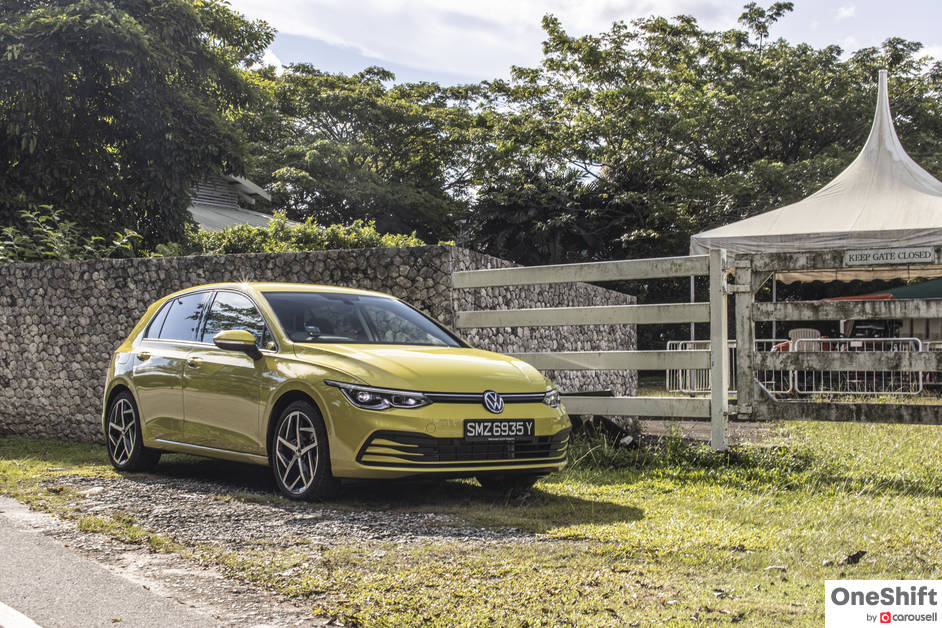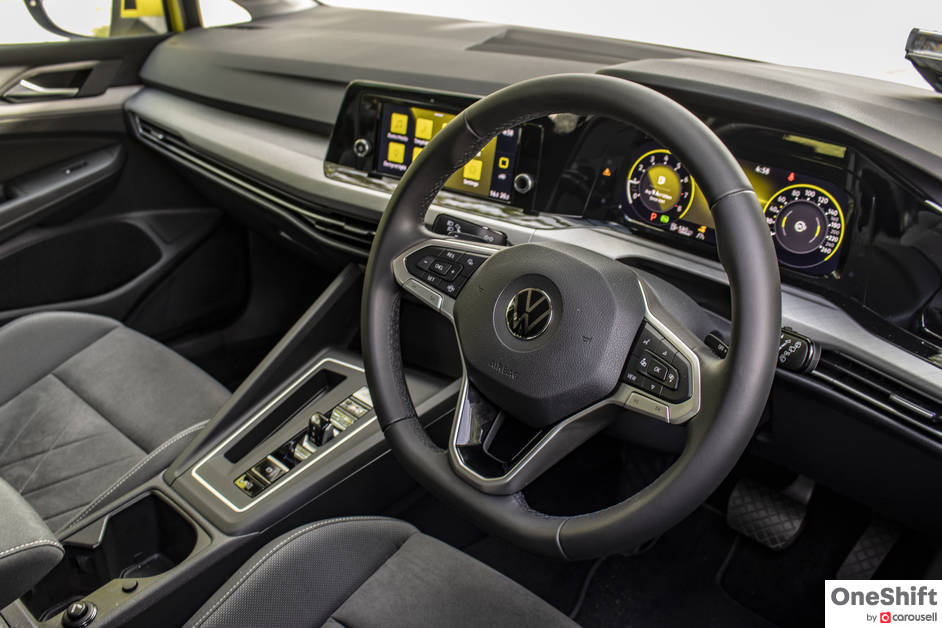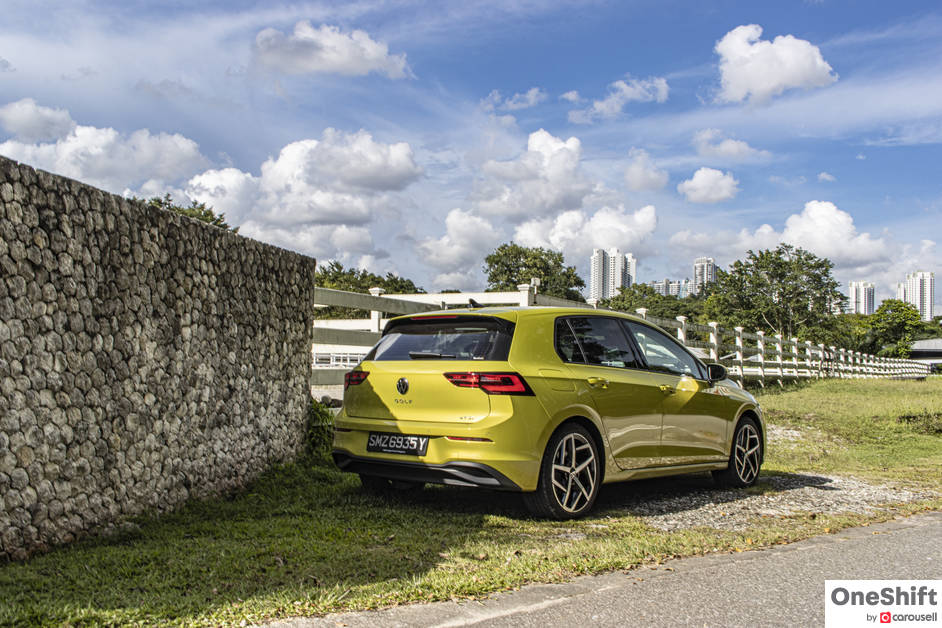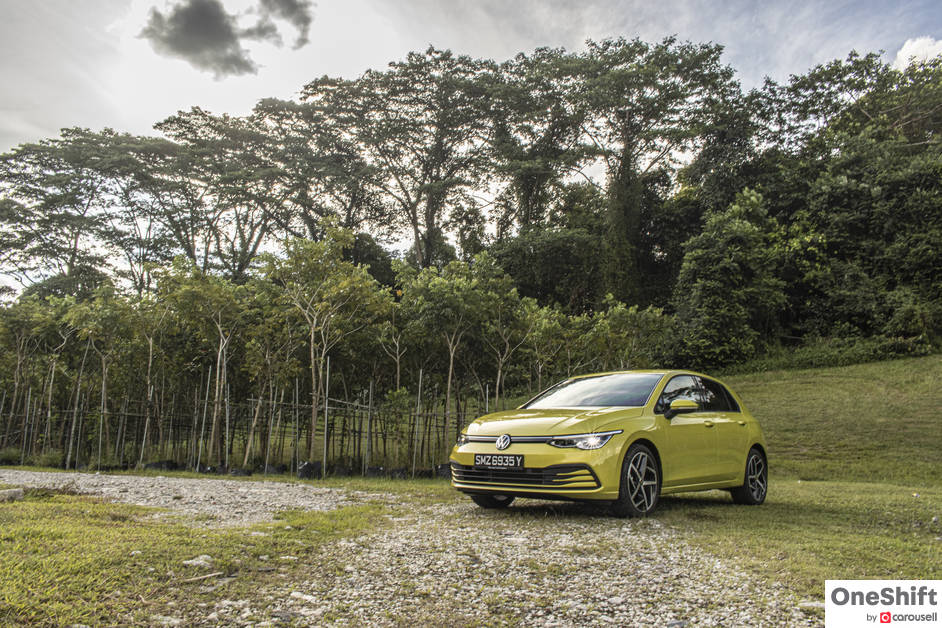Haloed Icon
The eighth generation Volkswagen Golf entered the Singapore market later than expected, due to the current global situation. The Volkswagen Golf is the German brand’s halo car, and one which might make you rethink your intended purchase of a C-Segment Premium hatchback.


The eighth generation Volkswagen Golf entered the Singapore market later than expected, due to the current global situation. The Volkswagen Golf is the German brand’s halo car, and one which might make you rethink your intended purchase of a C-Segment Premium hatchback.

But while the popular Volkswagen hatchback was originally intended to convey the brand’s ethos of being the people’s car, the humble Golf began growing with the times, especially after the Mk2 iteration. But even with change, some things still remain the same. The Volkswagen Golf is still a front-drive hatchback that is entertaining to drive, which is why it has won its legions of fans.

The new Golf 8 is moderately larger than the car it replaces, with a wheelbase just 16mm longer than the Mk7. Overall, the new Golf has kept to the size formula of being compact, while being able to accommodate its passengers and cargo with ease.
There are many design carry-overs from previous generation cars which you can see with the new Mk8. From its traditional quad headlamps, its stylised C-pillar, tail lights which are an evolution of the previous design, while the distinctive creased shoulderline, is a design feature first seen on the Mk3 and again on the Mk6 cars. The precise forming, and consistent shut lines are a hallmark of the Golf, and just about everything closes with a reassuring “thud”.

There are a few bits and bobs missing though, for one, the hydraulic strut to support the bonnet has been omitted and the car makes do with a conventional rod. The story of a few cost cuts are also evident within the interior; they are not deal breakers but we wish that these features had been retained.

A redesigned interior leaves little in common with the previous model. The dash is now a visually-chunky two-piece affair, with less buttons in the way. The infotainment screen has switched places with the central air-conditioning vents. As expected, quality is close to, and is even better than what can be found in certain premium brands. Little touches, like the integration of the air-conditioning vent closers with the directional louvers, streamlines the overall internal vent footprint, which helps in complementing the design of the dash.

The ‘Composition’ infotainment system, fronted by the 8.25” screen, is standard on both the Golf Life Plus, and base Golf Life models. The more upmarket R-Line is equipped with a 10” touchscreen which also features a nifty touch slider panel. I like that Volkswagen has also included a wireless charging pad as standard across the entire Golf model range.

All Golf models also now have a 10.25-inch Digital Cockpit Pro system, boasting greater flexibility in how you can choose to have your drive information displayed. The new steering wheel, which sports a more heavily-sculpted design, would not be foreign to anyone familiar with the previous design, since its button placement is largely similar.

With the Golf Mk8, Volkswagen now relies on a shift-by-wire system, which omits the mechanical shift lever, in favour of a thumb-sized selector, similar to what is in the related Audi A3, Skoda Octavia and SEAT and Cupra Leon cars. This arrangement frees up a little cabin space, and allows for more flexibility in sculpting the centre console.

If you are familiar with the Mk7 Golf, and were to hop into the Mk8, you would quickly realise that the contouring of the driver’s seat, how the pedals are positioned and how they meet your feet, and even the placement of the seat controls are familiar. You also get very similar all-round visibility just like in the previous car.
Passengers at the rear will find ample space, with room to tuck their feet under the front seats. The Golf 8’s 381 litre cargo space is also among the best-in-class, 86 litres more than the Mazda 3 hatchback, 14 litres smaller than the cheaper Hyundai i30 (which is now only offered with a 3cyl 1.0), while it is identical to the premium 1 Series BMW, and 11 litres more than the A-Class Mercedes-Benz.

Overall, the new Golf has a few good hits, but also its fair-share of misses. One of the gripes I have is the lack of flocking in the glove compartment, which significantly helps to reduce noise from items jostling about. The sliding cover which used to conceal the cup holder area has vanished, and is now an open affair. The rear-view mirror, which was once of an elegant frameless design, now has a black surround, which feels cheaper.
The Golf 8’s most important innovation is really in the new powertrain offered. A 1.5 litre eTSI four-cylinder, helped along by a 48V Mild-Hybrid system, drives the front wheels via a signature 7-speed DSG. Power has been increased significantly to 150hp (making this a Category B COE car), while torque has also risen to 250Nm, a 50Nm increase.

The Mild-Hybrid system is particularly useful during city driving, where it provides instantaneous acceleration, and allows the turbocharger time to spool up to do the rest of the driving work. The same Mild Hybrid architecture is also designed to power the car’s essential electricals when you lift off the throttle; since the Golf would choose to coast at almost every given opportunity to reduce fuel consumption. On longer stretches, especially during highway driving, the 1.5 litre engine is also able to deactivate cylinders 2 and 3, when under partial engine loads, and fully fires up without a hint that it is doing so, when you demand full-fat performance from all cylinders. Together, the different measures to reduce fuel consumption results in 16.7km/l combined, on days with a heavier traffic flow, and we even achieved 20.1km/l combined on days less busy.

While the 1.5 litre Golf is no GTI (stay tuned for this one), it is quicker than the car it replaces (8.5 seconds to 100km vs 9.1 seconds previously), and true to how a Golf should be, the Mk8 feels incredibly accurate around corners, and is just so easy to reel in when pushed to its limits.
Both Golf Life Plus and R-Line buyers will also benefit from an adjustable Cross Differential System (XDS+), developed initially for the GTI, which improves cornering ability by gently shedding speed on the inner wheels.

Other features designed to keep you safer, like Side Assist, which warns you of vehicles in your blind areas, and also Rear Traffic Alert, which warns you of vehicles crossing your path as you reverse, adds peace-of-mind during your ownership journey.
The Volkswagen Golf will continue to be the benchmark that other brands will try to replicate, but never closely emulated.

Credits: Words and Photos by Clifford Chow







- Convenient and Hassle-Free
- Consumer Protection
Transparent Process
With No Obligation


Get the Best Price for your used car
from 500+ dealers in 24 hours








